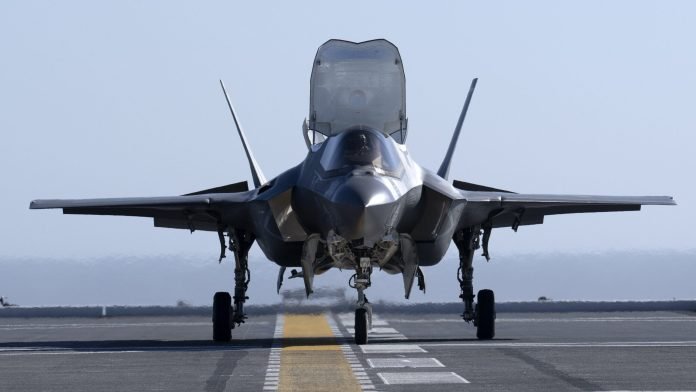Tel Aviv: The US administration promised Israel that the F-35 to be sold to Saudi Araba will be less capable than the F-35 fighter aircraft operated by the Israeli Air Force.
Israeli sources said on November 20 that this is in accordance with US policy and law designed to preserve Israel’s qualitative military edge (QME) in the region. The Saudi F-35s will lack several of the advanced features installed in the Israeli jets, including sophisticated electronic warfare packages, upgraded weapons systems, and sensitive missile technologies like the AIM-260 Joint Advanced Tactical Missile, which Israel is very likely to retain exclusively.
Israel’s Qualitative Military Edge (QME) is the US policy of ensuring Israel can defeat any conventional military threat in a non-nuclear conflict. It is maintained through a combination of Israel’s modern weaponry, advanced training, experienced forces, and the US providing security assistance and carefully vetting arms sales to prevent any neighbouring state from developing a comparable or superior military capability.
Israel is unique in that it does not require US approval to unilaterally update and modify its F-35s with radar-jamming capabilities, locally designed armaments, and other improvements. In addition to lacking such authorisation, Saudi Arabia’s aircraft will have outdated software that restricts their technological prowess in comparison to Israel’s fleet.
The US has so far delivered 45 F-35 to the Israeli Air Force (IAF) and has received real time updates on the performance of the F-35 in the Iranian airspace.
With the help of a special test aircraft, the Israeli air force has made changes in the advanced fighter aircraft. These include extra fuel tanks and the capability to carry more weapon systems. Foreign sources recently pointed to some of the changes Israel made in its F-35.
The F-35I’s original BAE AN/ASQ-239 electronic warfare suite has been supplemented with Israeli-developed technologies from Elbit Systems. This provides tailored jamming, precise detection, and countermeasures against regional threats like the Russian-made S-300PMU-2 air defence system.
The F-35I can deploy Israeli-made munitions, including bunker-busting bombs suited for hardened nuclear sites. It also features indigenous avionics, datalinks, and helmet-mounted display systems with “look and kill” targeting technology, enhancing pilot situational awareness and weapon guidance.
Israel is the first nation to operationally use the F-35’s “beast mode,” carrying external ordnance on underwing pylons for increased payload, though this is typically reserved for scenarios where stealth is less critical.
Israeli sources said that some of the changes have proved themselves during the attack in Iran. No details have been released but the Israeli Air Force’s F-35I fighters almost certainly played a pivotal role in the June 2025 strikes on Iranian nuclear facilities, leveraging stealth and precision to penetrate defended airspace, destroy key targets, and cripple Iran’s nuclear ambitions for the foreseeable future.
Israeli Air Force photos and official statements confirm that F-35I fighters were deployed in the strikes, alongside F-16 and F-15 aircraft. The F-35I’s stealth capabilities allowed Israeli jets to penetrate deep into Iranian airspace, targeting fortified nuclear sites and key military infrastructure while evading advanced air defences.
Israel’s F-35I fleet has been specially modified for extended range, potentially using conformal fuel tanks or jettisonable drop tanks, enabling long-range strikes without heavy reliance on aerial refueling. The IAF quickly achieved full air superiority over Iran degrading Iranian air defences and enabling follow-up waves of strikes with reduced risk.
This follow up waves included the IAF F-15I and F-16I equipped with special weapon systems that enabled high accuracy while attacking different sites that were in the “Target Bank” prepared during recent years by the Israeli intelligence organisations.
-The writer is an Israel-based freelance journalist. The views expressed are of the writer and do not necessarily reflect the views of Raksha Anirveda






